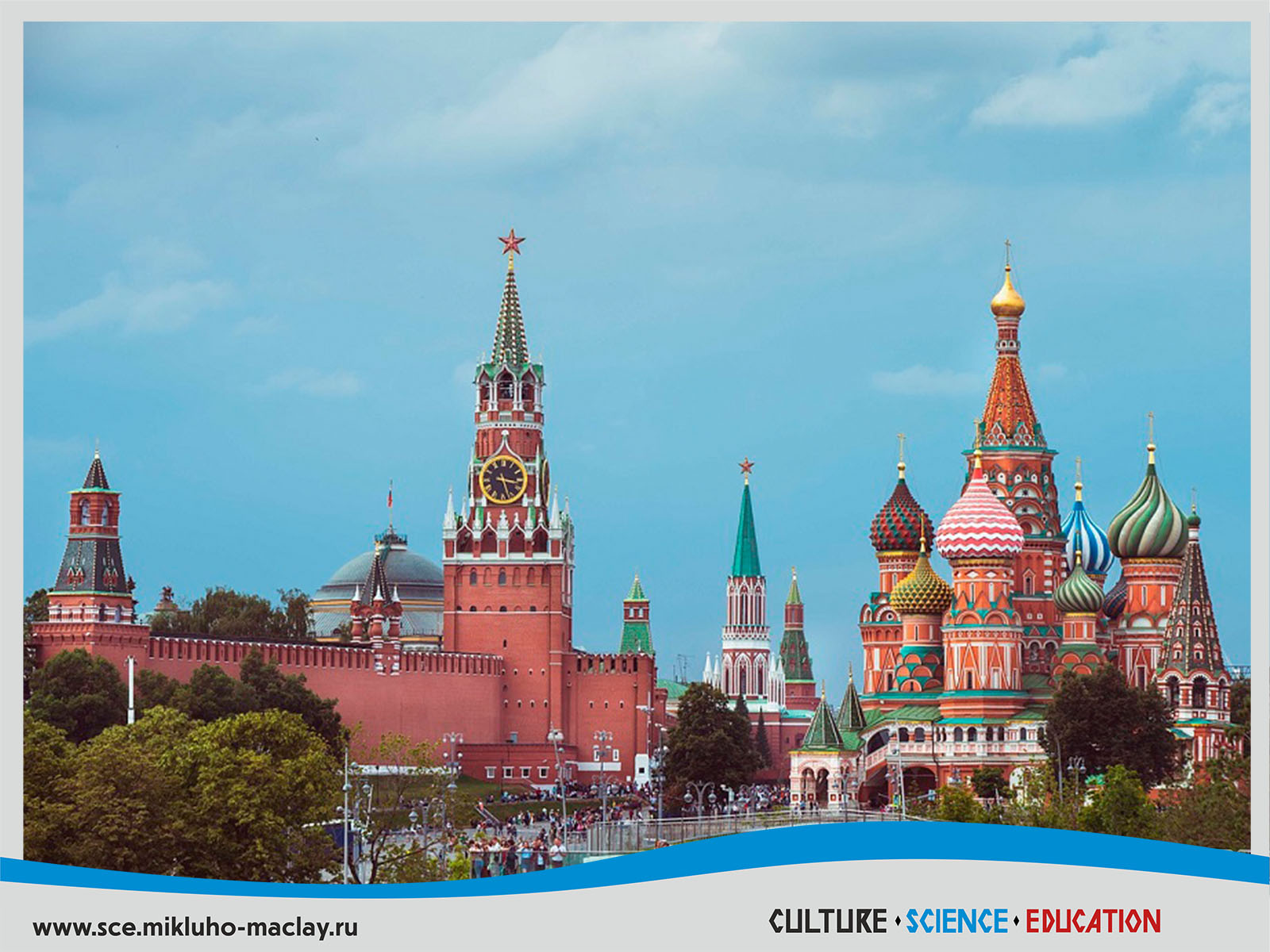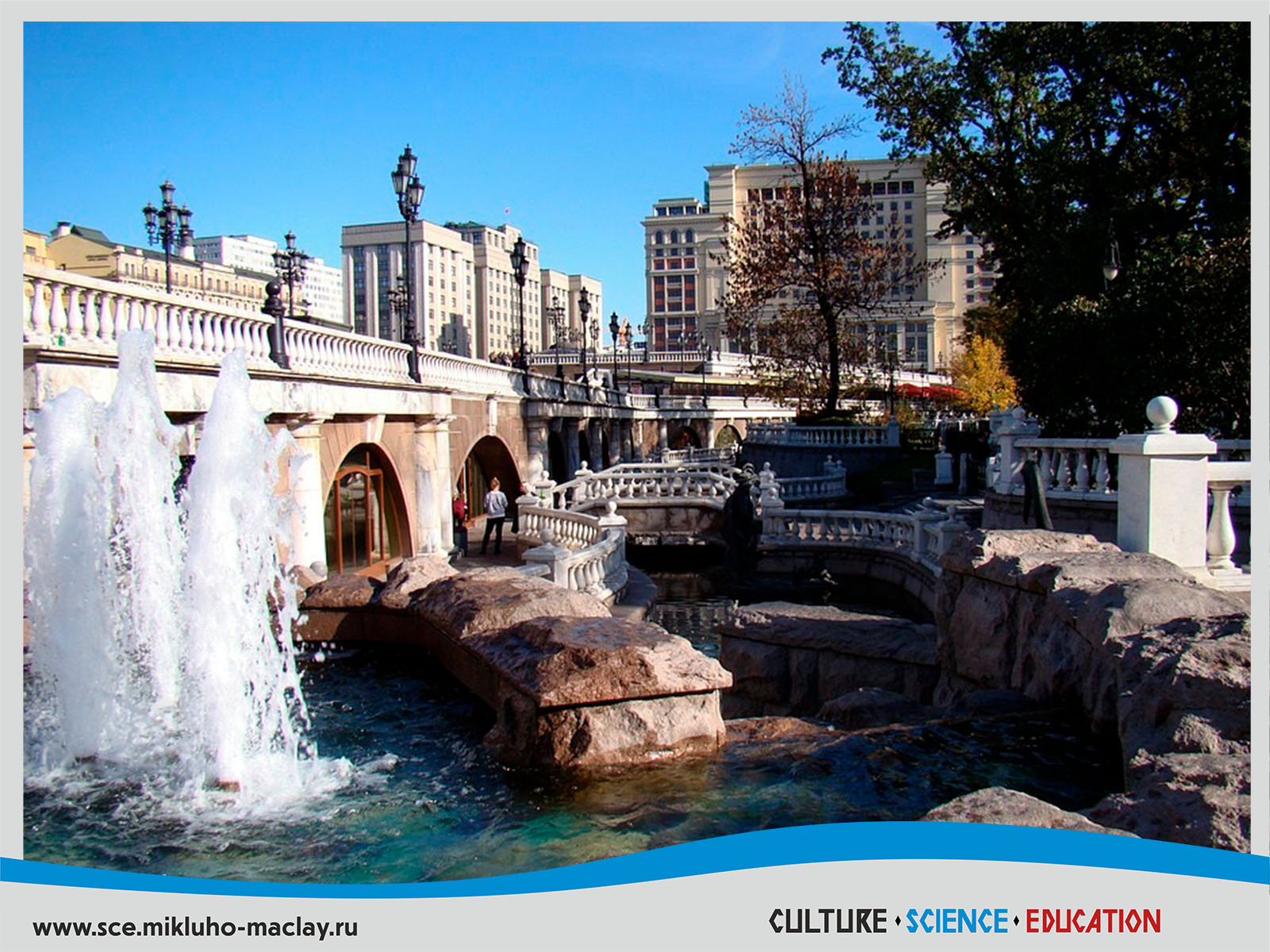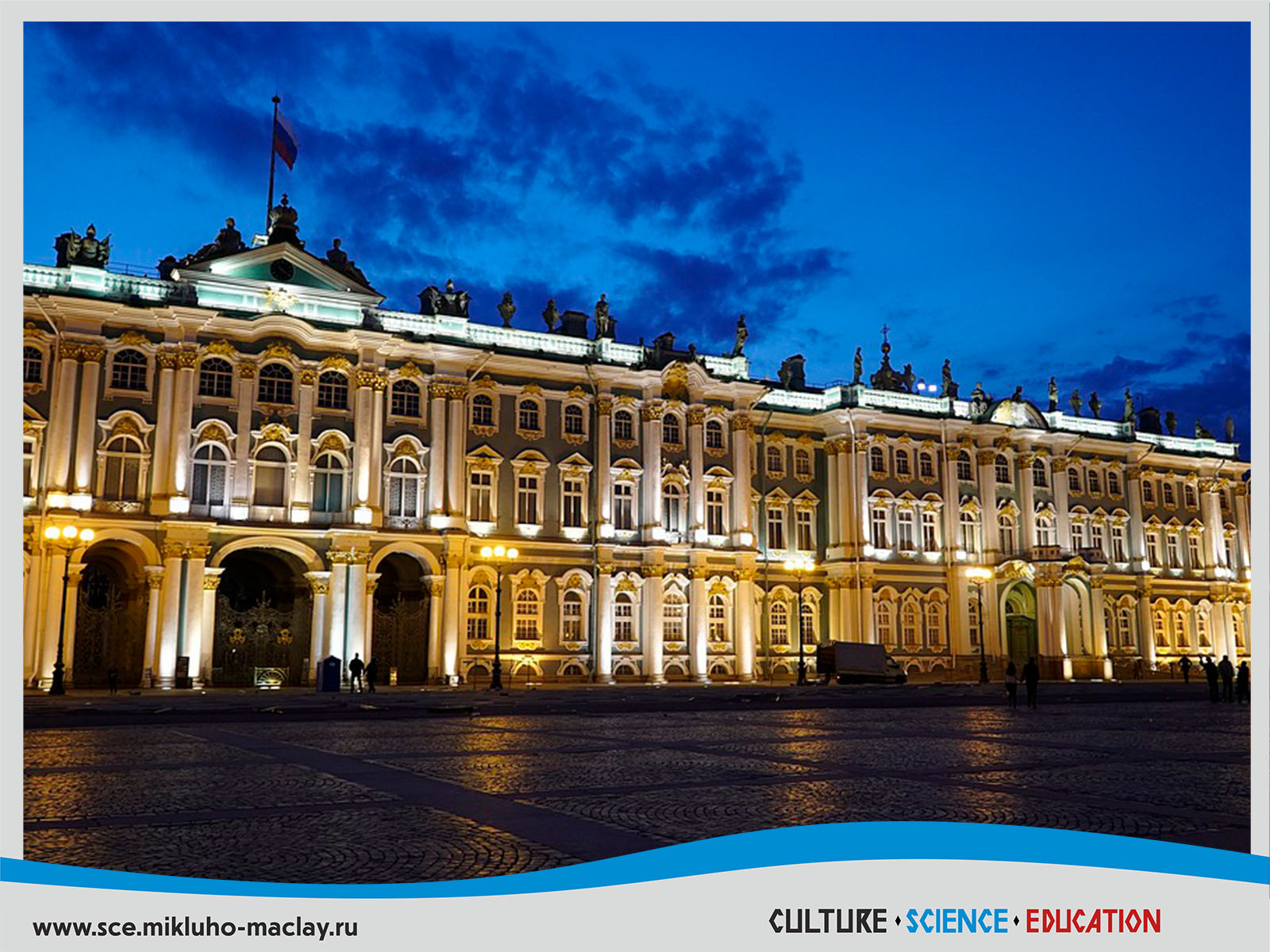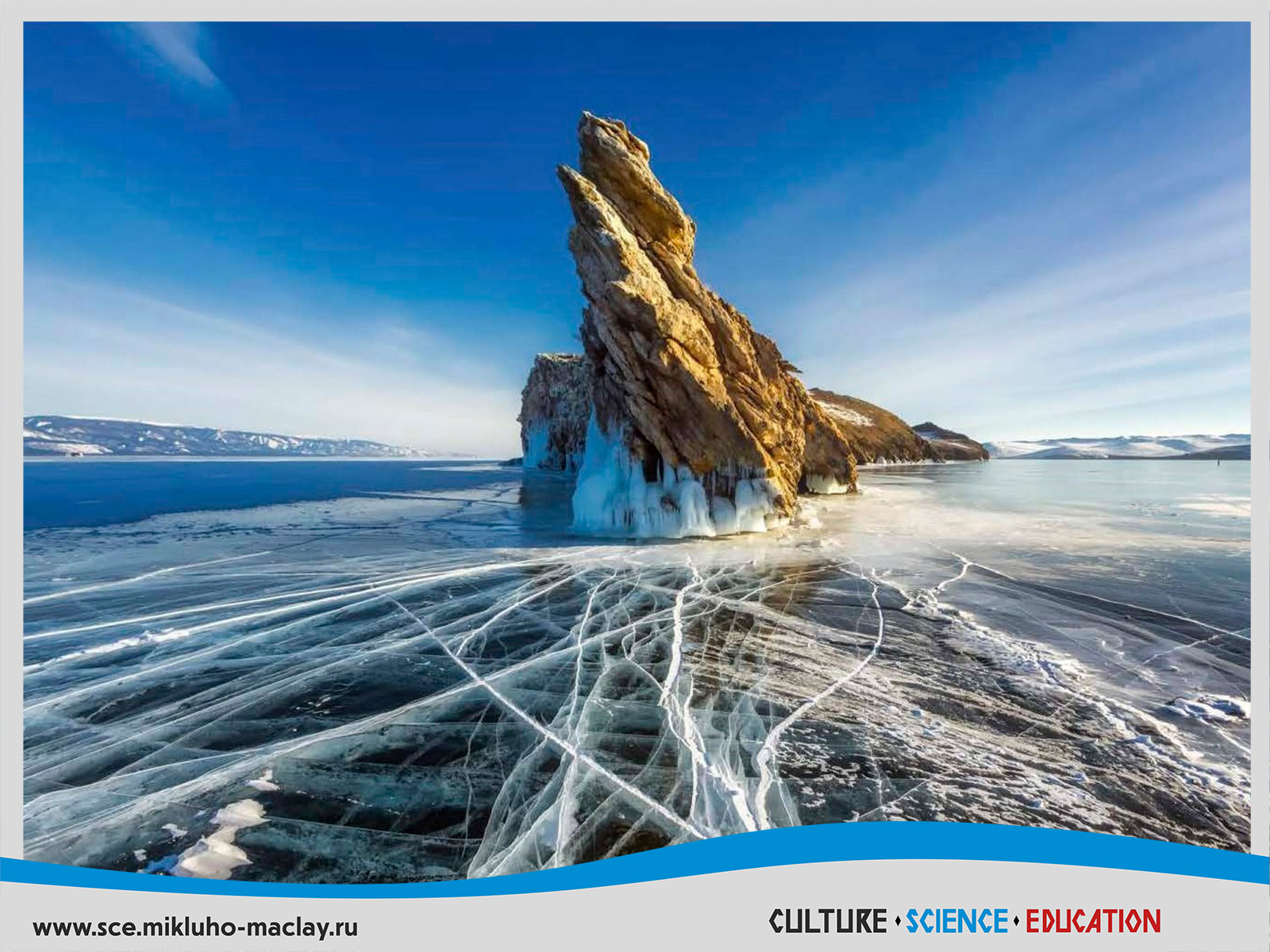Places to visit in Russia

Red Square; Photo by Vladvictoria

Manege Square; Photo by takazart
Red Square and the Moscow Kremlin, Moscow
Red Square is one of the most famous places in Russia. It is located in Moscow. This place witnessed many significant historical events in the country. There are many unique monuments and buildings, including the Moscow Kremlin, St. Basil’s Cathedral, the Monument to Minin and Pozharsky, the State Historical Museum, etc. on Red Square.
The Moscow Kremlin has always been the historical, political and cultural center of Moscow. Moreover, it is the largest active fortress in Europe. The Kremlin in ancient Russia was called the fortified center of the city of the oldest part of it.
Throughout history, the Moscow Kremlin has passed many changes. Archaeologists believe that the first fortress appeared in this place in the 11th century. Initially, the Kremlin’s walls were constructed of wood, but in the 14th century, under the reign of Prince Ivan I Kalita, new walls were wooden outside, covered with clay, but stone inside.
Under the reign of Prince Dmitry Donskoy, the Kremlin walls were built of white bricks. In those, the walls of the Kremlin were almost 2 kilometres long, which is shorter than the walls of modern Kremlin for 200 meters. Under the reign of Ivan III at the end of the 15th century, the Kremlin was rebuilt in red bricks by the Italian architects Aristotele Fioravanti and Pietro Antonio Solari. The height of the Kremlin walls ranges from 5 to 19 meters. There are 20 towers in the Kremlin and it played a key role for fortress defense. The Moscow Kremlin has always been in the middle of Russia’s prominent political and historical events. It hosted the Russian Tsars’ coronation and received ambassadors of foreign countries. During Soviet times, the Moscow Kremlin hosted the Government of the USSR. In 1955, it was partially opened to the public and it became an open-air museum.
There is the Grand Kremlin Palace on the territory of the Kremlin. It was built in 1849. Grand Kremlin Palace was built for temporary residence of the Russian Royal family members of during visits to Moscow. Its interior combines elements of the Renaissance and Russian-Byzantine style. Nowadays, all the halls of the Palace are used for high-level receptions. The Grand Kremlin Palace is also the official residence of the President of the Russian Federation.
There is one of the most prominent and famous monuments of ancient Russia architecture – St. Basil’s Cathedral on Red Square. It was inaugurated in 1561. Nowadays, St. Basil’s Cathedral is a functioning church, as well as one of the largest museums in Moscow. The height of St. Basil’s Church is 65 meters. It was the tallest building in Moscow for a long time, until the end of the 16th century.
The State Historical Museum is located across from St. Basil’s Cathedral. It was built in 1875-1883. The Museum owns more than 5 million items reflecting the political, economic, cultural life of Russia from ancient times to the beginning of the 20th century, including personal items of Tsars and Emperors.
The Monument to Minin and Pozharsky has particular importance for the architectural ensemble of Red Square. During the Vague time (1598-1613, Smuta) Kuzma Minin and Prince Dmitry Pozharsky gathered in Nizhny Novgorod the Second resistance against the Swedish and Polish-Lithuanian State invaders. In 1612, the Russian army conquered the invading army and completely liberated the capital. This monument was erected in 1818 to the 200th anniversary of the victory of Russian militias over foreign invaders. Nowadays, the Monument to Minin and Pozharsky is one of the main attractions of both Moscow and Russia.
The Moscow Kremlin and Red Square have been under the protection of UNESCO since 1991.
The Manege Square, Moscow
In 1817, on the five-year anniversary in honour of the victory over Napoleon, the Manege was built in front of the Kremlin. The author of the project was the great Russian statesman, architect and engineer Augustin Betancourt. The Manege building had been the largest building in Russia for 150 years. The layout of the building was also special: there were no columns propping up the ceiling inside. In 1825, the famous Russian architect Osip Bove decorated the building with moulding details in the form of military attributes of ancient Roman legionaries.
Originally, the arena was intended for military displays, but soon the site in the centre of Moscow was used as an exhibition hall and a space for charity evenings, folk festivals and concerts. In 1931, the square in front of the Manege was called ‘Manege Square’. In 1932, all the buildings on the square began to be demolished due to the construction of the first line of the Moscow underground. The Manege square was cleared by 1938. In 1967, for the anniversary of the October Revolution 1917, the Manege Square has been renamed after the 50th Anniversary of October, but in 1990 the square received its original name. In 1993, the Moscow authorities modified the traffic near the Kremlin, released the square from the traffic flow.
The eminent sculptor Zurab Tsereteli participated in the reconstruction of the Manege Square. He built a complex of 12 fountains and many bronze monuments. In 1995, on the Anniversary of the Victory in the Great Patriotic War, a monument to Marshal Zhukov was raised on Manege square in front of the State Historical Museum.

St. Isaac’s Cathedral; Photo by Georg11

The State Hermitage Museum; Photo by dvorianova

The State Russian Museum; Photo by irina-mozi
The State Russian Museum, Saint Petersburg
The State Russian Museum has the world’s largest collection of Russian Art. Its buildings are a unique architectural and artistic complex in the historical center of St. Petersburg. The State Russian Museum is located in the Mikhailovsky Palace. The reconstruction of the Palace rooms for Museum exhibitions began in May 1895. The architect was a well-known Russian specialist Vasily Svinin.
The State Russian Museum is the first state museum in Russia of fine art. The decision to establish it was made by Emperor Alexander III. The Grand opening of the State Russian Museum for visitors took place in March 1898. The basis of the collection of The State Russian Museum were objects and works of art transferred from the Winter, Gatchina and Alexander palaces, from the Hermitage and the Academy of Arts, as well as collections of private collectors donated to the Museum. The State Russian Museum’s collection includes about 400 thousand exhibits and covers all historical periods and trends in the development of Russian art, the main types and genres, trends and schools for more than 1 thousand years — from the 10th to the 21st century.
The State Hermitage Museum, Saint Petersburg
The State Hermitage Museum is one of the largest art, cultural and historical museums both in Russia and the world. The Hermitage is among the top twenty most visited art museums in the world.
History of the Museum begins with collections of works of art, which were acquired by the Russian Empress Catherine II. Originally the collection was located in a special wing of the Winter Palace — the Small Hermitage (from FR. hermitage — ‘a place of solitude’, ‘cell’). In 1852, the Imperial Hermitage was formed from the greatly expanded collection and opened to the general public.
Nowadays, The State Hermitage Museum is a large museum complex. The main exposition part of the Museum occupies five buildings located along the Neva river embankment in the centre of St. Petersburg. The main building of the Hermitage is considered to be the Winter Palace. The Museum’s collection includes about 3 million works of art and monuments of world culture, from the Stone Age to the XXI century.
The St. Isaac’s Cathedral, St. Petersburg
The St. Isaac’s Cathedral is one of the greatest monuments of Russian architecture of the 19th century, as well as one of the greatest dome structures in the world.
The construction of St. Isaac’s Cathedral extended for 40 years (1818-1858). The facades of the Cathedral are decorated with monolithic granite columns. The architect Auguste de Montferrand worked to create the Cathedral.
The Cathedral is decorated with sculptures of angels, evangelists and apostles. There are 24 sculptures of angels and archangels on the balustrade of the main dome.
The St. Isaac’s Cathedral has preserved a rich collection of Russian visual art of 1840-1850. The Cathedral contains 103 wall paintings and 52 paintings on canvas, created by the greatest Russian artists of that time (Fyodor Bruni, Karl Brullov, Timofey Neff and etc.).
The art decoration of St. Isaac’s Cathedral was the reason for the revival of mosaic art in Russia in the 19th century. There are more than 60 mosaics with a total area of more than 500 square meters. Mosaic work at the Cathedral began in 1851 and continued until 1914.

The Lake Baikal.Photo by David Mark

Far Eastern Federal University; Photo by DVFU

Geyser Valley, Kamchatka Peninsula.Photo by Bella Vita Giovanni
Lake Baikal, Irkutsk
Baikal is the oldest and deepest lake on Earth. Lake Baikal surrounded by mountains and hills, and its shape resembles a huge lunar crescent. More than 3500 species of animals and plants live in the waters and on the coast of Baikal. About 80% of the fauna is endemic and found only in Lake Baikal and nowhere else on Earth.
In summer and autumn, the water in Baikal is warmed by the sun as much as possible. In winter, the surface of the lake is covered with a thickness of ice, which is damaged with numerous multi-kilometre cracks. The ice breaks with a sound like gunfire or thunder. Cracks in the ice help the fish breathing.
There are several hundred earthquakes a year near the Baikal. Most earthquakes are not so strong (1-2 points) and most of the earthquakes can be determined only with the use of highly sensitive equipment. Some scientists believe that Baikal can become a new ocean in future. The transformation of the lake continues nowadays.
Mount Elbrus, Kabardino-Balkariya, Nalchik
Elbrus is the highest peak in Russia and Europe. Elbrus is an extinct volcano that last erupted 2000 years ago. Elbrus has formed about 1 million years ago and consists of alternating layers of lava and ash.
According to Greek myths, Elbrus is the place where Prometheus was chained for daring to bring fire to people.
The peaks of Elbrus are covered with huge caps of long-term snow. In the powerful ice-houses of Elbrus originate 3 rivers, which together form the Kuban River, the largest river in the North Caucasus. Kuban River is sometimes called ‘the Daughter of Elbrus’.
The history of the climbing of Elbrus has almost 200 years. The first its height was determined in 1813 by the Russian scientist Vikenty Vishnevsky. In 1829, the first recorded climbing of the Eastern peak of Elbrus by the expedition of the Russian Geographical Society under the leadership of the hero of the war against Napoleon, General George Emmanuel, took place. The support service of the expedition included more than 900 people.
The first geographical map of Elbrus was developed in 1890 by the Russian topographer Andrey Pastukhov, who made the first climbing to Elbrus without guides. The rocks at 4800 meters are now named in after him.
Nowadays Elbrus is one of the most popular ski resorts in Russia. It visits by many snowboarders, skiers and climbers.
Scientists believe Elbrus is not extinct, but a dormant volcano. There are still hot messes that heat the local springs — rich with mineral salts in its depths. It’s reaches + 52 and + 60°C.
The Valley of Geysers, Elizovsky Municipal District of Kamchatka Krai, Kamchatka Peninsula
The Valley of Geysers in the Kronotsky state wildlife reserve is one of the most famous geyser fields in the world. The Valley is located among volcanoes stretching along the Eastern coast of the Kamchatka Peninsula. The Valley of Geysers was discovered only in 1941.
There are more than a dozen of geysers (boiling springs, periodically gushing by steam-water mixture) on the territory of the Valley.
In the area of geysers has developed a unique ecosystem: local thermal species of bacteria, algae and lichens, etc. During the eruption, the water temperature reaches + 98°C. There are many ancient algae, which inhabited the ponds of our planet about three billion years ago in the waters of the Valley. Also, there are a lot of rare plants on the slopes of the Valley.
